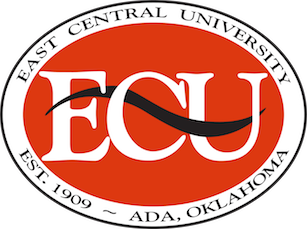The Oka’ Institute at East Central University, in partnership with the Chickasaw Nation Office of Natural Resources, has launched a groundbreaking initiative aimed at advancing water-based community development: The Tribal Center for Community Excellence (TCCE). This partnership is designed to strengthen water infrastructure and improve long-term water security across the Chickasaw Nation Treaty Territory.
Duane Smith, Executive Director of the Oka’ Institute, describes the TCCE as “a key building block for economic sustainability and community unity through strategic partnership development.”
The TCCE prioritizes projects in economically disadvantaged areas, focusing on enhancing local water supplies for long-term reliability and resilience to climate change and drought. Joseph Harris, Community Coordinator at the Oka’ Institute, emphasizes the Center’s collaborative approach “we’re committed to supporting community water system planning, technical assistance, and funding coordination for priority water and wastewater projects.”
Director Smith also highlighted the foundational role of the Chickasaw Nation’s support “we are incredibly grateful to Governor Anoatubby and the Chickasaw Nation for their unwavering commitment to launching the TCCE and investing in reliable water solutions for our communities.”
Building Capacity Through Collaboration
In partnership with 1050 Forward (a Tulsa-based nonprofit), Grow Ada, and the Chickasaw Nation, the Oka’ Institute recently applied for a $20 million Environmental Protection Agency grant to further expand the capabilities of the TCCE.
The Center is already implementing a series of impactful community water infrastructure projects, including:
• Connerville, Oklahoma – A $4 million partnership with the U.S. Bureau of Reclamation, Chickasaw Nation, and Johnston County RWD #3 to resolve longstanding water quality issues and improve water reliability.
• Wapanucka, Oklahoma – A $3 million collaboration with the Bureau of Reclamation, Chickasaw Nation, and Atoka RWD #4 to address an ODEQ consent order and ensure clean, compliant water access.
• Building Resilient Infrastructure and Communities (BRIC) Program – A $1 million FEMA-funded initiative, in partnership with the Chickasaw Nation, to help 25 communities assess infrastructure threats, increase capacity, and grow collaborative networks.
• McClain and Grady Counties Water Regionalization Planning – A multi-agency planning effort led by the Chickasaw Nation, U.S. Army Corps of Engineers, Oklahoma Water Resources Board, and 16 local water providers. The region’s economic growth—highlighted in a 2023 Stacker article showing Grady County’s GDP at $6 billion (6th highest in Oklahoma) and McClain County’s at $2 billion—underscores the importance of long-term sustainable water planning. From 2018 to 2022, Grady County’s GDP rose 62% and McClain’s grew by 26%, compared to the state average of just 2%.
Additional TCCE Success Stories
• Tishomingo P3 Partnership – A public-private partnership between the City of Tishomingo, Oka’ Institute, and NexTo LLC, whose CEO Brent Kisling emphasizes working “next to” communities to help them grow through meaningful collaboration.
• Tishomingo Water Treatment Plant – A $14 million investment to upgrade water infrastructure and secure supply for future generations. Partnership efforts offset fifty percent of total project costs saving the city of Tishomingo $7 million dollars.
• Lone Grove ARPA Project – A $4 million investment that lifted a 15-year moratorium on residential water connections, unlocking new growth and opportunity for the community.
To learn more about the Tribal Center for Community Excellence and to stay up to date on current projects, visit www.okainstitute.org or contact:
• Joseph Harris, Oka’ Institute Community Coordinator, at (580) 559-5968
• Turner Brewer, Chickasaw Nation Community Environmental Sustainability Manager, at (580) 399-9153.

